Boys’ Thai cave rescue: the key questions
THE rescue of 12 boys and their soccer coach trapped in a cave in Thailand is not a simple operation. Here are some of the questions that experts are grappling to solve.
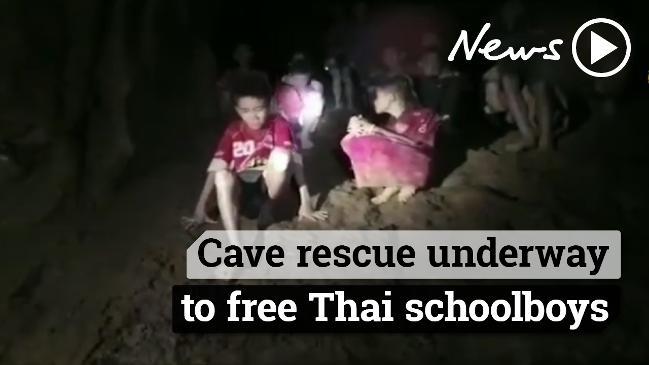
World
Don't miss out on the headlines from World. Followed categories will be added to My News.
THE rescue of 12 boys and a soccer coach trapped by high water levels from monsoon rains inside Thailand’s Tham Luang cave network is not a simple operation. How they survive and how they get out are just some of the questions that experts are grappling to solve.
MORE: Dramatic rescues that defied the odds
MORE: Thai lost boys “can’t swim”
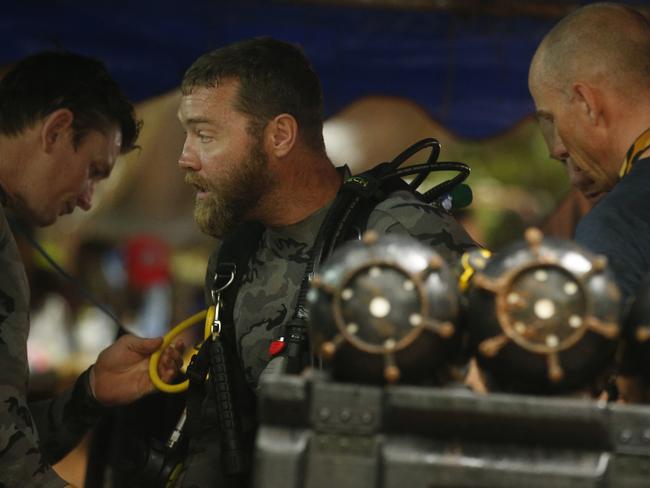
HOW DID THEY GET STUCK IN THE CAVE?
The 12 boys, ranging in age from 11 to 16, went missing on June 23 after apparently setting out to explore the Tham Luang Nang Non cave network, one of Thailand’s most popular tourist attractions, accompanied by their 25-year-old coach.
The boys were members of the Moo Pa soccer team, which directly translates to wild boar.
They were said to have regularly visited the cave in the district of Mae Sai for training and recreation.
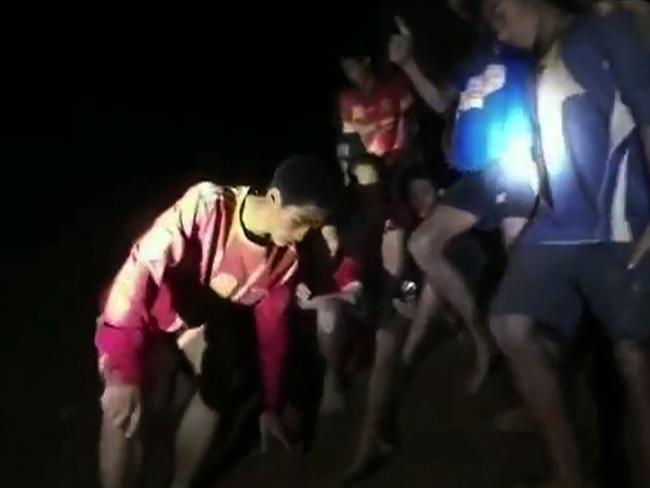

During the wet season, which lasts from June until October, the cave can flood up to 5 metres. There are signs posted at the opening to the cave warning people that the cave network can become flooded during monsoon season.
It is believed the boys crawled into the 10km cave system, before monsoon rains started suddenly and flooded the caves, trapping them inside.
WHO FOUND THEM?
Two amateur British cave divers, regarded as the best in the world, were the first to reach the group after a nine-day round-the-clock search involving international teams of divers, including the Australian Federal Police.
Richard Stanton and John Volanthen used specialist diving techniques and risked their own lives to tackle the two-kilometre underground labyrinth.
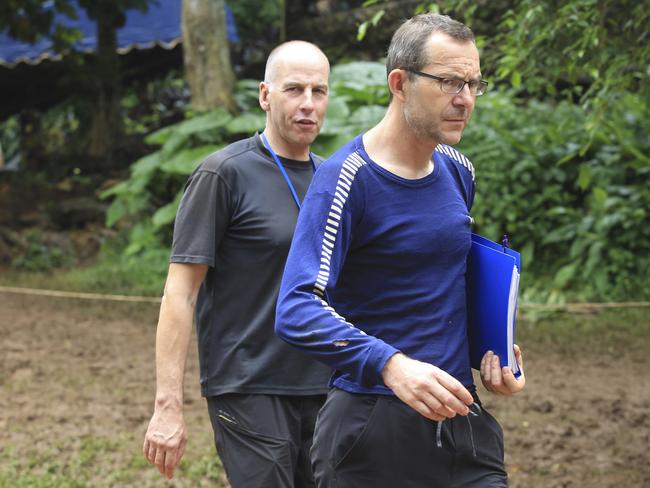
Footage of the group, shot by the British divers, showed the boys and their coach huddled on a ledge surrounded by water. They said they were hungry and asked what day it was and if they could leave.
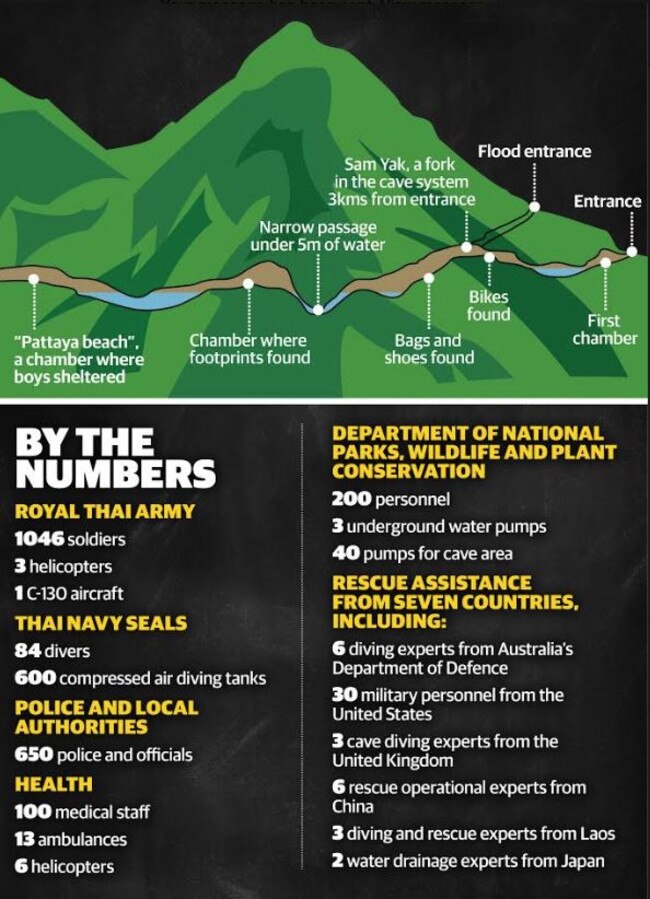
Rescuers now face a race against time as they work out how to recover the boys ahead of anticipated rain in Thailand’s monsoon season.
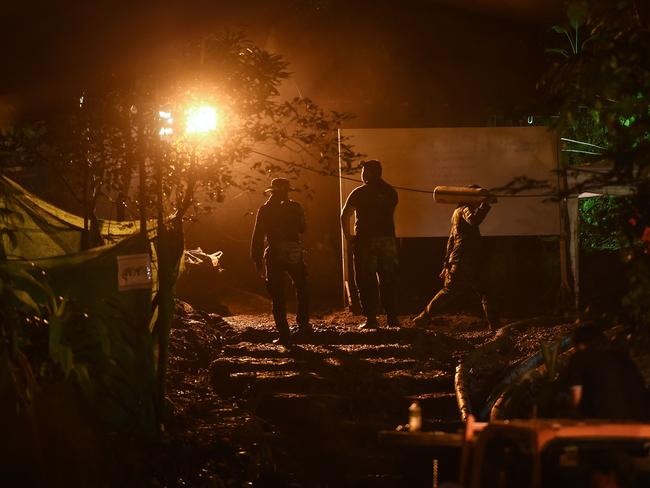
WHAT DID THEY EAT?
It is not yet known what the boys ate and drank for nine days but it is likely had very little food.
Messages sent by the group before setting off to explore the cave suggested they had taken torches and some food with them.
One rescue diver reported the condition of the boys was “very weak” and the boys repeatedly told the British divers who found them that they were hungry.
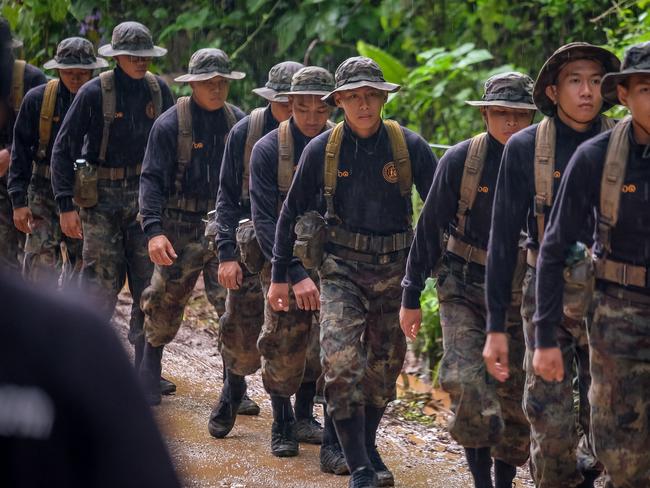
One child told his friend in Thai “Make sure they know we’re hungry”.
As for drinking water, it is likely they drank water that filtered through the rock, or even drank floodwater. Throughout the week officials have expressed concern that they boys may be drinking contaminated water.
WHAT STATE OF HEALTH ARE THEY IN?
A medical team was sent in to assess the health of the trapped boys and their coach and reported back that they are all in good health or having only “light” injuries.

“We categorised their health condition as red, yellow or green, red being the most severe injuries, yellow being mild and green being light. Yesterday, unofficially, we assessed that most are in the green category,” said Chiang Rai governor Narongsak Osottanakorn.
Medical teams will continue to monitor the boys’ health while they are trapped inside the cave network.
Narongsak said rescue workers would now have to decide how best to get the group out in their weakened condition.

HOW WILL THEY SURVIVE?
Much-needed food and medical supplies — including high-calorie gels and paracetamol — reached the boys on Tuesday.
The military have sent in food provisions to last the group for up to four months, until the end of the monsoon season, when water levels recede making conditions safer to rescue the group.
Officials are reportedly installing phone cables so the boys can talk to their parents.

WHAT ARE THE DIVERS DOING NOW?
The divers will stay with the group while they wait to be extracted and will use the time to teach them how to use scuba gear, to aid with their eventual rescue.
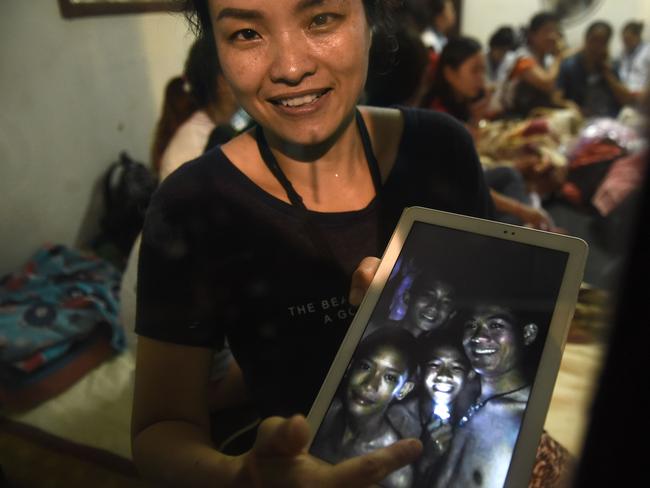
COULD THE BOYS SWIM OUT?
In theory yes: but it is an extremely difficult task. Cave diving is already very risky, especially for young boys in a weakened state who have no diving experience.
Tham Luang cave where the boys have been trapped is one of Thailand’s longest at 10km (6 miles) and one of the hardest to navigate with its winding and at times narrow corridors.

If they dive, they have no choice but to follow the steps that rescuers took though tiny passageways clogged with mud and silt. That journey takes a healthy — and skilled — Navy SEAL diver about six hours.
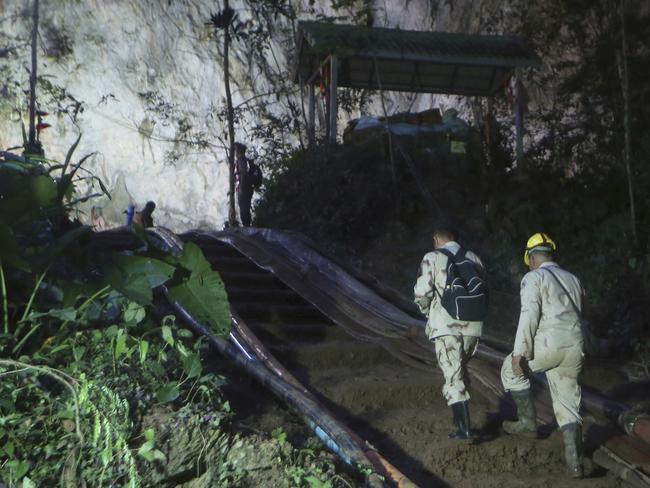
Officials said they would attempt to train the boys to use crucial diving gear after they are rehabilitated with food, water and medical support.
“Cave diving is a very technical skill and it’s extremely dangerous, especially for an untrained diver,” Anmar Mirza, coordinator of the US National Cave Rescue Commission. “So they may end up being better off trying to supply them in cave until they can be gotten out by other means.”
COULD THEY BE DUG OUT?
Explorers have spent days scouring the mountain top for possible alternative openings. They have found a few “promising” leads and have tried to drill deeper.
But there is no indication that any of those chimneys connect to the chamber where the boys have been stranded.
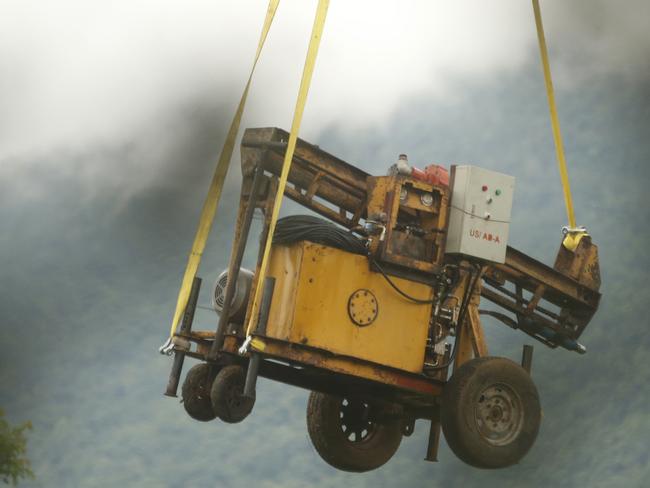
Again, the boys need to spend time getting stronger in the depths of the cave before they can attempt to climb up a second entry - if one is found - or be lifted out.
WHAT ABOUT WALKING OUT?
This would be the safest option, but at the moment it is impossible because parts of the route remain flooded.
So in theory they could wait, but that means hoping that flood waters subside.
Water pumps are working around the clock to drain the floods though it has been an uphill battle for much of the week as heavy rains refused to let up.
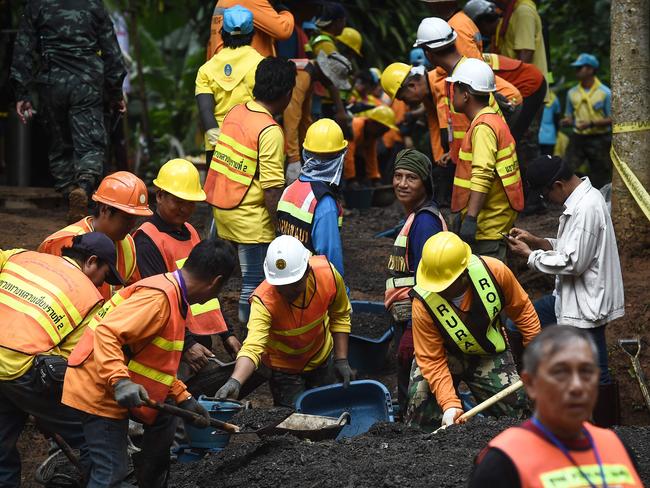
If the current break in bad weather sticks, this option could be more promising.
But weather forecasters warn downpours may soon return as monsoon season sets in.
“If the rain fills up the cave system then that might take months before the water drops again,” Belgian diver Ben Reymenants, owner of Blue Label Diving in Thailand who is assisting the search, told AFP.
HOW LONG COULD IT TAKE?
It depends how long it takes for them to regain strength.
Experts say they could remain inside for weeks, or even months, as rescuers work out the safest option for their extraction.
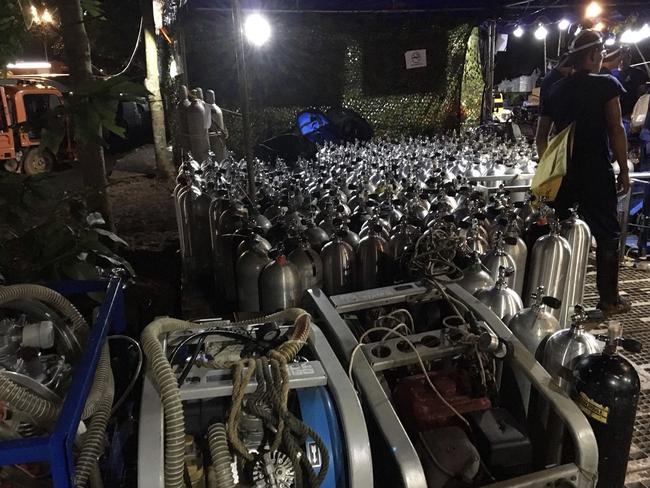
Detective Superintendent Thomas Hester said the team of six divers from the Australian Federal Police faced “incredibly challenging” conditions including low visibility and tight areas within the cave system.
There was no indication of how long the rescue mission would take, but the AFP are looking at a “longer-term option”, he said.
“Our Specialist Response Group dive team have been diving shortly after arrival (in Chiang Rai) and one of the difficulties they face is a very flooded cave system, it’s very difficult to see and move through that system.
“There are a lot of small, tight areas where larger size people, especially with equipment, may have trouble moving through.”
Detective Superintendent Hester said it would be extremely difficult for the divers to bring the boys back with them.
“The ability to try to pull the boys through those areas with any diving equipment is incredibly challenging,” he said.
Originally published as Boys’ Thai cave rescue: the key questions


